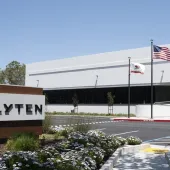Graphene cement patent moves a step forward
A new cement blend using graphene made from plant materials has been granted a US patent, opening the door to more sustainable and resilient concrete in construction and energy sectors.
Halliburton Energy Services filed the patent in September 2023, and it was officially published on 13 March 2025, making the full details publicly available for the first time. The material, called bioderived renewable graphene (BRG), is intended to improve the mechanical performance of cement without relying on synthetic graphene.
The cement mixture includes between 0.2% and 20% BRG by weight of cement and can be used in wellbores and other demanding environments. BRG is made from common crops and food by-products, including cassava, sugarcane, corn and rice. These plant-based materials are processed through a series of thermal and chemical steps to create nanosheets of graphene with a sheet-like structure.
According to the patent, concrete made with BRG showed better compressive strength, increased stiffness (Young’s modulus), and improved resiliency compared to similar mixtures made with synthetic graphene. In particular, the ratio of stiffness to strength—a key indicator of how brittle or flexible a material is—was improved by at least 10%.
The inventors, Thomas Pisklak and Kyriacos Agapiou, both work for Halliburton Energy Services, which holds the patent. They claim the performance gains come from the unique structure and purity of the BRG nanosheets, which are over 90% carbon and have surface areas ranging from 2,000 to 5,000 square metres per gram.
The cement is designed for use in challenging environments such as oil and gas wells, where performance and durability are critical. But the use of construction-grade cement in the mix and the focus on renewable materials suggest future applications in broader civil engineering settings.
The patent also outlines a method for placing the BRG cement into annular spaces between steel casings and rock formations, a common step in wellbore construction. While the energy sector is the immediate focus, the use of lower-carbon graphene additives may draw interest from the wider construction industry as attention grows around reducing emissions from cement production.
The patent is currently active and held by Halliburton Energy Services.







